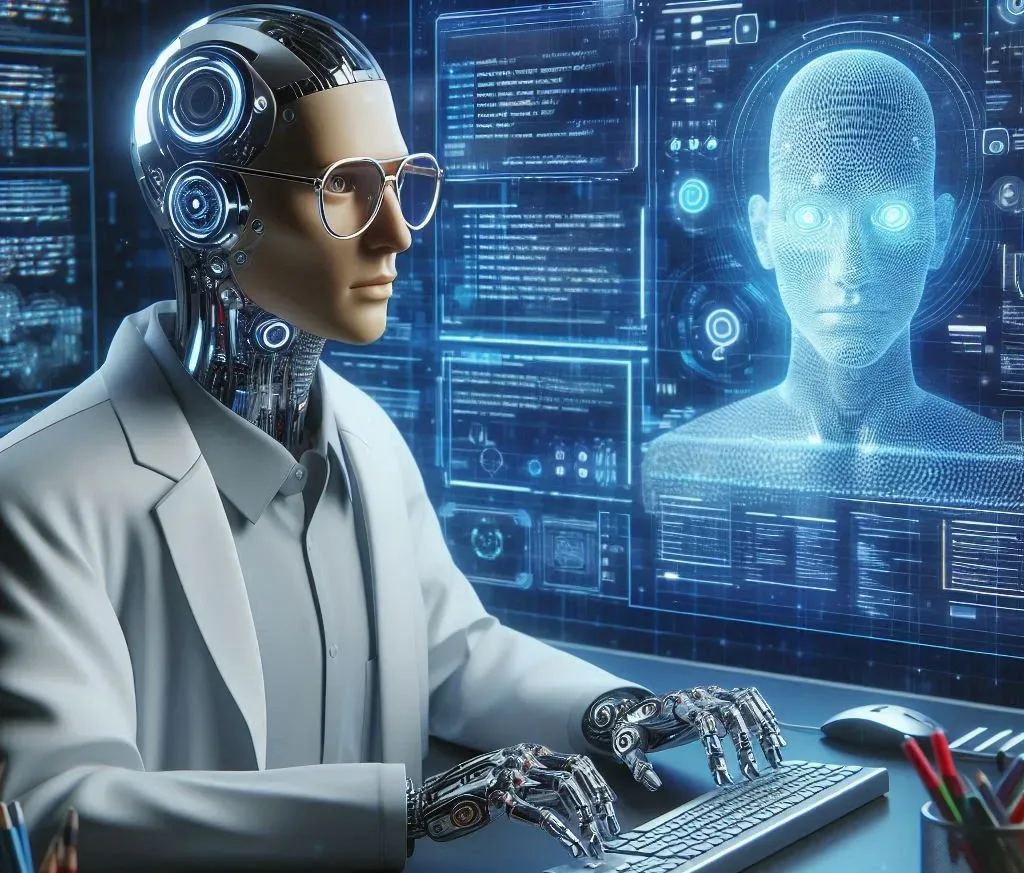Artificial Intelligence (AI) has become an integral part of our modern technological landscape, transforming industries and reshaping the way we interact with machines. Among the various branches of AI, expert systems stand out as a powerful and practical application of knowledge-based reasoning. These sophisticated software programs are designed to emulate the decision-making abilities of human experts in specific domains, offering valuable insights and solutions to complex problems.
In this comprehensive exploration of expert systems, we’ll delve into their origins, fundamental concepts, components, and advanced applications. We’ll also examine their strengths, limitations, and the pivotal role they play in the broader AI ecosystem. By the end of this article, you’ll have a deep understanding of expert systems and their significance in the field of artificial intelligence.
The Genesis of Expert Systems
The concept of expert systems emerged in the 1960s and 1970s as researchers sought to create computer programs that could solve complex problems by reasoning through bodies of domain-specific knowledge. Unlike general problem-solving methods, expert systems were designed to excel in narrow, specialized fields by leveraging the expertise of human specialists.
One of the earliest and most famous expert systems was MYCIN, developed at Stanford University in the early 1970s. MYCIN was designed to diagnose blood infections and recommend appropriate antibiotic treatments. Despite the limited computing power of the time, MYCIN demonstrated the potential of expert systems to assist in critical decision-making processes.
Fundamental Concepts of Expert Systems
At their core, expert systems are built on several key principles that differentiate them from other AI approaches:
- Domain-Specific Knowledge: Expert systems focus on narrow, well-defined areas of expertise, such as medical diagnosis, financial planning, or engineering design.
- Symbolic Reasoning: Unlike statistical or neural network-based AI systems, expert systems typically use symbolic logic and rule-based reasoning to draw conclusions.
- Explanation Capability: Many expert systems can provide explanations for their reasoning, making their decision-making process transparent and understandable to users.
- Separation of Knowledge and Inference: Expert systems maintain a clear distinction between the knowledge base (domain-specific information) and the inference engine (reasoning mechanism).
- Incremental Development: These systems can be gradually refined and expanded by adding new rules and knowledge, allowing for continuous improvement over time.
Components of an Expert System
To understand how expert systems function, it’s essential to examine their primary components:
1. Knowledge Base
The knowledge base is the repository of domain-specific information, typically represented as a set of rules, facts, and heuristics. This knowledge is usually acquired from human experts through a process called knowledge engineering. The quality and comprehensiveness of the knowledge base directly impact the system’s performance.
Example of a rule in a medical diagnosis expert system:
“`
IF patient has fever AND patient has sore throat
THEN consider strep throat as a possible diagnosis
“`
2. Inference Engine
The inference engine is the “brain” of the expert system, responsible for applying logical reasoning to the knowledge base to derive conclusions or make decisions. It uses various strategies to navigate through the rules and facts, such as:
– Forward Chaining: Starting with known facts and working forward to reach a conclusion.
– Backward Chaining: Starting with a goal or hypothesis and working backward to find supporting evidence.
3. User Interface
The user interface allows non-expert users to interact with the system, input data, and receive recommendations or conclusions. A well-designed interface should be intuitive and capable of explaining the system’s reasoning in terms that users can understand.
4. Explanation Facility
This component provides justifications for the system’s conclusions, showing the chain of reasoning that led to a particular decision. This feature is crucial for building user trust and helping users understand the rationale behind the system’s recommendations.
5. Knowledge Acquisition Subsystem
This module facilitates the process of adding new knowledge to the system, either through direct input from domain experts or through machine learning techniques that can extract patterns from data.
Types of Expert Systems
Expert systems can be categorized based on their primary functions or the nature of the problems they address:
- Diagnostic Systems: These systems identify problems or malfunctions based on observable symptoms. Examples include medical diagnosis systems and equipment troubleshooting tools.
- Planning Systems: Used for developing sequences of actions to achieve specific goals, such as project management or logistics planning.
- Design Systems: These assist in creating configurations of objects that meet specific requirements, like architectural design or circuit layout.
- Monitoring and Control Systems: Used in process control and surveillance applications to interpret data in real-time and make adjustments or sound alarms as needed.
- Instruction and Training Systems: These systems provide personalized guidance and feedback to learners, adapting to individual needs and progress.
- Prediction and Forecasting Systems: Used in fields like finance and meteorology to anticipate future trends or events based on current and historical data.
Advanced Concepts in Expert Systems
As the field of AI has evolved, so too have expert systems. Several advanced concepts have emerged that enhance their capabilities and broaden their applications:
Fuzzy Logic in Expert Systems
Traditional expert systems operate on binary logic, where statements are either true or false. However, many real-world problems involve degrees of truth or uncertainty. Fuzzy logic allows expert systems to reason with imprecise or ambiguous information, making them more flexible and capable of handling complex, nuanced situations.
For example, a fuzzy expert system for climate control might use rules like:
“`
IF temperature is slightly warm AND humidity is moderate
THEN increase cooling slightly
“`
Here, terms like “slightly warm” and “moderate” are fuzzy concepts that can be represented mathematically, allowing for more nuanced control decisions.
Integration with Machine Learning
While traditional expert systems rely on manually encoded knowledge, modern systems often incorporate machine learning techniques to enhance their capabilities. This integration can take several forms:
- Automated Rule Induction: Machine learning algorithms can analyze large datasets to automatically generate rules for the knowledge base.
- Adaptive Systems: The expert system can learn from its interactions and outcomes, refining its knowledge and decision-making over time.
- Hybrid Systems: Combining symbolic reasoning with neural networks or other ML models to leverage the strengths of both approaches.
Distributed Expert Systems
As problems become more complex and data-intensive, distributed expert systems have emerged as a solution. These systems divide the knowledge base and processing across multiple interconnected nodes, allowing for:
– Parallel Processing: Faster decision-making on complex problems.
– Scalability: Easier expansion of the system’s capabilities.
– Robustness: Increased fault tolerance through redundancy.
Temporal Reasoning
Many real-world problems involve reasoning about events and states that change over time. Advanced expert systems incorporate temporal logic to handle time-dependent information and make predictions or diagnoses based on the evolution of a situation.
For instance, a medical expert system might use temporal reasoning to track the progression of symptoms and adjust its diagnosis accordingly:
“`
IF patient developed fever 2 days ago AND rash appeared today
THEN consider viral exanthem as a possible diagnosis
“`
Uncertainty Management
Real-world decision-making often involves uncertainty. Advanced expert systems employ various techniques to handle uncertain or incomplete information:
- Bayesian Networks: Probabilistic models that represent dependencies between variables and allow for reasoning under uncertainty.
- Dempster-Shafer Theory: A mathematical framework for representing and combining evidence from different sources.
- Certainty Factors: Numerical values associated with rules or facts to represent the degree of belief or disbelief in a particular piece of information.
Applications of Expert Systems
Expert systems have found applications across a wide range of industries and domains. Here are some notable examples:
1. Healthcare
– Diagnosis Support: Systems like DXplain assist physicians in diagnosing complex or rare conditions by analyzing patient symptoms and medical history.
– Treatment Planning: Expert systems help oncologists develop personalized cancer treatment plans based on patient data and current medical knowledge.
– Drug Interaction Checking: Pharmacy systems use expert systems to identify potential drug interactions and dosage issues.
2. Finance and Banking
– Credit Assessment: Expert systems evaluate loan applications by analyzing financial data and credit histories.
– Fraud Detection: Banking systems use rule-based expert systems in combination with machine learning to identify suspicious transactions and potential fraud.
– Investment Advisory: Robo-advisors use expert systems to provide personalized investment recommendations based on client goals and risk tolerance.
3. Manufacturing and Engineering
– Process Control: Expert systems monitor and control complex manufacturing processes, optimizing production and identifying potential issues.
– Quality Assurance: Systems analyze product specifications and test results to ensure compliance with quality standards.
– Design Optimization: In fields like aerospace engineering, expert systems assist in optimizing designs for performance, efficiency, and safety.
4. Environmental Management
– Environmental Impact Assessment: Expert systems help evaluate the potential environmental consequences of proposed projects or policies.
– Disaster Response Planning: Systems assist in developing and executing response plans for natural disasters based on current conditions and historical data.
5. Education and Training
– Intelligent Tutoring Systems: These expert systems provide personalized instruction and feedback to students, adapting to individual learning styles and progress.
– Skill Assessment: Expert systems evaluate employee skills and recommend appropriate training programs.
6. Legal and Regulatory Compliance
– Legal Expert Systems: These assist lawyers in case analysis, legal research, and predicting case outcomes.
– Regulatory Compliance Checking: Expert systems help organizations navigate complex regulatory environments by ensuring compliance with relevant laws and standards.
Challenges and Limitations of Expert Systems
While expert systems have proven valuable in many domains, they also face several challenges and limitations:
- Knowledge Acquisition Bottleneck: Extracting and codifying expert knowledge can be time-consuming and difficult, especially for complex domains.
- Maintenance and Updates: Keeping the knowledge base current in rapidly evolving fields can be challenging and resource-intensive.
- Handling Uncertainty: Despite advances in uncertainty management, expert systems may struggle with highly ambiguous or contradictory information.
- Creativity and Intuition: Expert systems excel at applying defined rules but may fall short in situations requiring creative problem-solving or intuitive leaps.
- Explanation in Complex Systems: As expert systems become more sophisticated, providing clear explanations for their decisions can become more challenging.
- Integration with Legacy Systems: Implementing expert systems within existing IT infrastructures can be complex and may require significant adaptation.
The Future of Expert Systems
As AI continues to evolve, expert systems are finding new roles and applications:
- Integration with Big Data: Expert systems are being combined with big data analytics to process vast amounts of information and derive insights.
- Enhanced Natural Language Processing: Improvements in NLP are making expert systems more accessible and easier to interact with through conversational interfaces.
- IoT and Edge Computing: Expert systems are being deployed on edge devices to enable real-time decision-making in IoT environments.
- Explainable AI: As concerns about AI transparency grow, the explanation capabilities of expert systems are becoming increasingly valuable.
- Cognitive Computing: The principles of expert systems are being incorporated into more comprehensive cognitive computing platforms that aim to mimic human thought processes.
Conclusion: Expert systems represent a powerful and practical application of artificial intelligence, bringing the knowledge and reasoning capabilities of human experts to bear on complex problems across diverse domains. From their origins in early AI research to their current integration with cutting-edge technologies, expert systems continue to evolve and find new applications.
As we’ve explored in this article, the fundamental principles of knowledge representation, symbolic reasoning, and explanation capabilities remain at the core of expert systems. However, advanced concepts like fuzzy logic, machine learning integration, and distributed architectures are expanding their capabilities and relevance in the modern AI landscape.
While challenges remain, particularly in knowledge acquisition and handling uncertainty, the future of expert systems looks promising. Their ability to provide transparent, explainable AI solutions makes them invaluable in critical domains where decision-making processes must be clear and accountable. As AI continues to transform industries and society, expert systems will undoubtedly play a crucial role in harnessing human expertise, augmenting decision-making processes, and pushing the boundaries of what’s possible in artificial intelligence.




